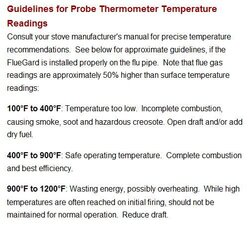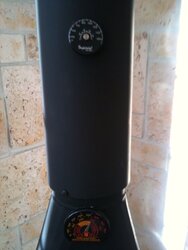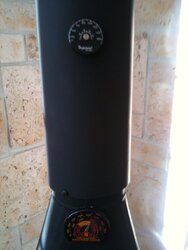Just opened the box on a new flue temp probe and installed.

Is this sort of results what you guys get? As you can see, my old rutland is very accurate with my infrared thermometer (the low was recorded in the pic as 288, MAX of 315, rutland is reading 300, not bad IMO) But the new probe thermometer is at the top of the safe zone at 900!?!
The stove has been cruising for about an hour w/ the air turned down. Stove top is about 650.
Is this normal? I figured since the rutland and the new probe are both 18 inches up, that reading low on the rutland would also read on the low side for the flue probe.
What sort of readings do you guys get?
I think the next step is to put the new probe thermometer in the oven to check it's accuracy. I hope that the paint on the face can withstand being IN 500 degrees.
Thoughts?
pen
Is this sort of results what you guys get? As you can see, my old rutland is very accurate with my infrared thermometer (the low was recorded in the pic as 288, MAX of 315, rutland is reading 300, not bad IMO) But the new probe thermometer is at the top of the safe zone at 900!?!
The stove has been cruising for about an hour w/ the air turned down. Stove top is about 650.
Is this normal? I figured since the rutland and the new probe are both 18 inches up, that reading low on the rutland would also read on the low side for the flue probe.
What sort of readings do you guys get?
I think the next step is to put the new probe thermometer in the oven to check it's accuracy. I hope that the paint on the face can withstand being IN 500 degrees.
Thoughts?
pen




